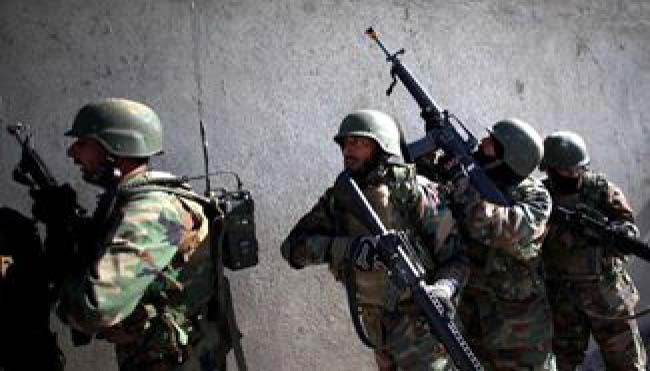As the Afghan Government is preparing for another bloody year of Taliban campaign, a NATO internal report has concluded that the security situation would further deteriorate while the Afghan army is not well capable of dealing with the hard-headed insurgency. Media reports suggest that based on NATO evaluation of the Afghan armed forces, the Afghan National Army is hardly ready for military operations against the Taliban and other militant groups. According to the report, only one unit of the overall 101 infantry units of the Afghan army across the country is ready to fight while “major problems” have been noticed in other units. For example, the report says, ten battalions with each having 600 soldiers have never been deployed for combat operations. The leaked NATO report is coming while there are widespread concerns in the country over how the Afghan security forces would deal with another, and perhaps much fiercer, round of the Taliban military offensive next spring.
Recently, the parliament summoned top security officials over the military campaign against the Taliban and the prospect of the Taliban offensive next year.
The officials said that there would be a more difficult year ahead as the Taliban will try to mount another year of campaign against the Afghan security forces. The government officials assured the MPs that the security agencies were prepared to take the war to the insurgent groups and disrupt the militants’ preparations for the next year offensive.
The Taliban are believed to be reorganizing for the next spring offensive against the government of Afghanistan, with the group trying the establish supply routes in northern provinces. The militants have been waging a persistent campaign this year for taking grounds in the northern provinces as well as capturing some key districts in the southern Helmand province.
In 2015, the Afghan army and police forces fought a bitter campaign against Taliban in major provinces in the north, east and south of the country.
The Afghan security forces did exhibit some praiseworthy capabilities in suppressing the Taliban and denying the militants to take any major areas for long. The fall of Kunduz province came as the most embarrassing setback for the government forces as it marked Taliban’s first major achievement since the fall of their regime in 2001. The fall of Kunduz laid bare some of most important weaknesses and vulnerabilities of the government in battling the insurgency.
Last year was the most challenging year for the Afghan forces in terms of the extent and intensity of the insurgency across the country. The army and police forces fighting the Taliban and other militant groups suffered major shortcomings and deficiencies ranging from weaponry and equipment to coordination and intelligence.
The Afghan security forces engaged in bitter wars in large areas of the country which stretched the army’s strength and resources. The Taliban perhaps deliberately chose to open multiple fronts in the battle against the government forces to weaken the army’s strength and resources. The Afghan National Security Forces fought the Taliban in many provinces in the north and south of the country while they fought the Islamic State group in the east of the country. In addition, as part of a strategy focused on reacting to the Taliban threats, the Afghan army forces were being deployed in small units in response to immediate threats from the insurgents. This led to undermining the government forces as they were always fighting in a reactive approach to the Taliban’s attacks. The acting minister of defense confessed in a hearing in the parliament that the approach was wrong, and it undermined government’s war efforts against the Taliban and other militant groups.
Another major deficiency in the management of the ANSF was lack of sufficient coordination among units stationed on the battlefields and the central headquarters. The army units were reported to suffer heavy casualties as result of being caught under Taliban siege or heavy assault in different parts of the country.
The luck of sufficient coordination led to potential undermining of the government forces in the fight against Taliban. Intelligence is another Achilles’ heel of the Afghan government forces in the campaign against the insurgency. The Afghan forces heavily rely on NATO-led coalition in major areas such as intelligence and air firepower. This is while the coalition forces have been drawing down from Afghanistan, and Afghan forces have been shouldering the burden of the war against the insurgency alone.
The government of Afghanistan has recently stepped up efforts to get warplanes for the Afghan air force to boost the campaign against the Taliban.
The Indian and US governments have provided a warplanes to the Afghan forces, however, the fledgling air force of Afghanistan still has a long path ahead for becoming professional and capable in providing air support to ANSF. The government equipment of the air force would turn the tide in favor of the security forces in the fight against the Taliban and other militant groups.
The air force would hopefully provide some air support for the Afghan ground forces next year as the government struggles to receive planes and equipment from the international community.
Due to the high rate of the ANSF casualties and the escalating war by the insurgent groups, the Afghan army and police forces have been facing desertion of soldiers from army and police ranks. The high rate of attrition is potentially weakening the armed forces of Afghanistan. The desertion from the army and police ranks has been particularly high in more volatile areas of Afghanistan.
The government needs to take actions in receiving help from the international community to further boost capabilities of the Afghan army and police forces.

